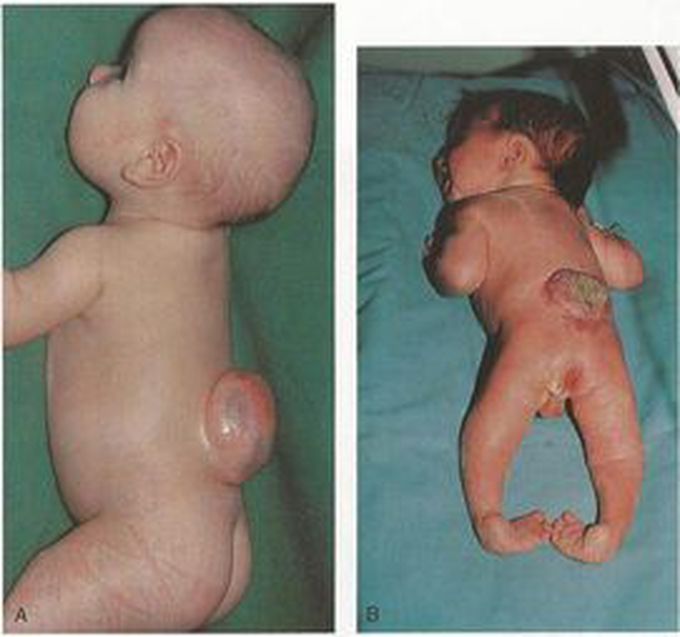


Spina Bifida
Spina bifida is a birth defect where there is incomplete closing of the backbone and membranes around the spinal cord.There are three main types: spina bifida occulta, meningocele, and myelomeningocele. The most common location is the lower back, but in rare cases it may be the middle back or neck.Occulta has no or only mild signs.Signs of occulta may include a hairy patch, dimple, dark spot, or swelling on the back at the site of the gap in the spine. Meningocele typically causes mild problems with a sac of fluid present at the gap in the spine.Myelomeningocele, also known as open spina bifida, is the most severe form. Associated problems include poor ability to walk, problems with bladder or bowel control, hydrocephalus, a tethered spinal cord, and latex allergy.Learning problems are relatively uncommon.
Wanted to add Spina Bifida Occulta does not necessarily = little or no symptoms or complications. As with any medical diagnosis, the degree of severity varies. Can result in spinal instability of the lumbar spine into the sacrum along with neurological & reproductive issues leading to limited mobility, difficulty carrying a fetus to full term, drop foot, sciatica, etc. After diagnosis, I underwent a multiple level laminectomy and spinal fusion using autologous bone taken from the right iliac crest & hardware. Other pathologies were bilateral talipes equinovarus, Cauda equina syndrome (CES), Bicornuate unicollis, in addition to others. SBO is not always benign.

